Are Dogs Cannibals? Uncovering the Truth Behind Their Behavior
Cannibalism may seem like an unsettling and unnatural concept, but it is actually more common in the animal kingdom than one might think. From prairie dogs to scorpions, various species have been observed displaying cannibalistic behaviors for a variety of reasons. But what about man’s best friend, the dog?
While dogs are primarily known as loyal and social creatures, there have been instances where they have attacked, killed, and eaten other dogs. It is important to note that this is not typical behavior for the majority of the canine population. In certain circumstances, factors such as scarce resources, intense competition, or inherent aggressive tendencies can trigger cannibalistic instincts.
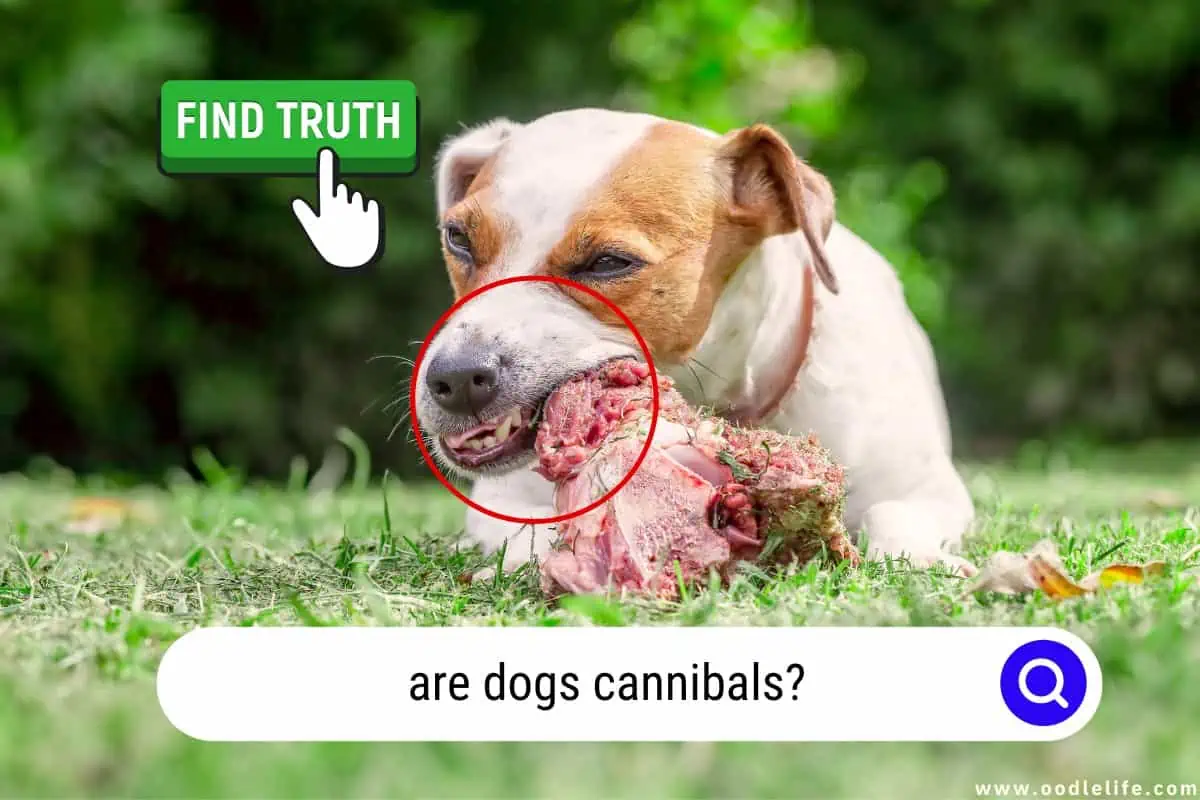
So, while it’s an uncommon and unsettling occurrence, it is possible to classify dogs as cannibals under specific conditions.
Understanding Cannibalism in the Animal Kingdom
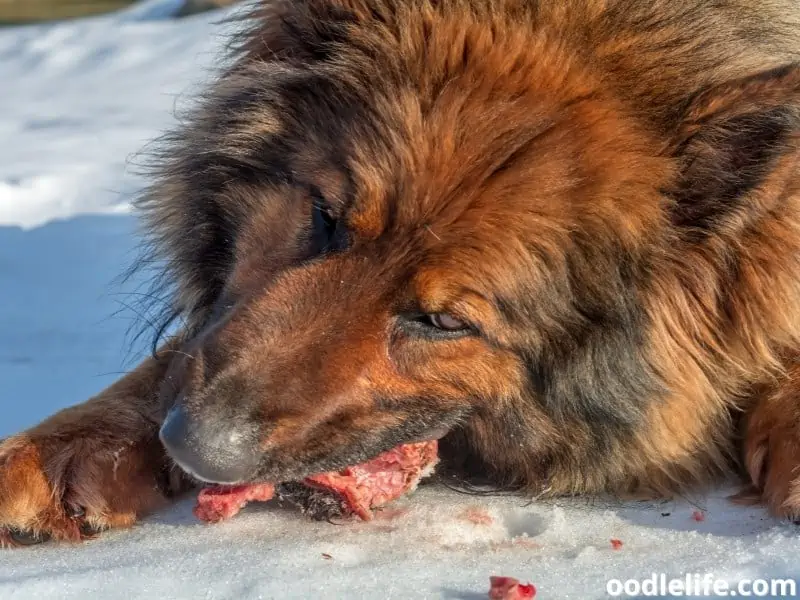
Evolution and Natural Selection
Cannibalism, the act of eating one’s own species, occurs more frequently in the animal kingdom than you might think. It’s often driven by evolution and natural selection, as organisms are constantly striving for survival and reproduction. In some cases, this means consuming their own kind – from insects munching on their siblings to male lions eliminating the young of rival males.
Take the praying mantis, for example. The notorious female may devour her mate during or after mating, ensuring she gets the extra nutrients needed for successful reproduction. Isn’t love a beautiful thing?
And, if you think your family dinners are awkward, consider the fact that chimpanzees sometimes cannibalize infant rivals to get that protein fix.
Competition for Resources
Cannibalism can also be a result of competition for limited resources like food or territory. In these cases, animals may turn on each other, sometimes resorting to eating the flesh of their fellow species members. Think of it like the animal version of having the last slice of pizza – it’s every creature for itself.
In the world of insects, for instance, spiderlings can consume their siblings to reduce competition for food, ultimately increasing their own chances of survival. Talk about sibling rivalry to the extreme.
Cannibalistic Behavior
Sometimes, cannibalistic behavior can be a byproduct of stress or a response to threats. It could be caused by overcrowding, habitat destruction, or even changes in weather patterns, forcing animals to resort to unusual tactics in order to survive.
Stressed out rodents, such as rats and mice, have been known to eat their own offspring when food is scarce or they feel threatened. It may sound gruesome, but in the grand scheme of things, it’s a way for them to ensure their survival and maintain their resources.
So, while the idea of cannibalism may feel foreign or unsettling to us humans, it’s a natural and common occurrence throughout the animal kingdom. We can only hope that the vegan craze doesn’t catch on with spiders and chimps anytime soon!
Cannibalism in Dogs
Maternal Cannibalism
Maternal cannibalism occurs when mother dogs eat their own puppies. This behavior may seem shocking, but it happens for a variety of reasons. Inexperienced female dogs may become stressed and confused during the birthing process, leading to this cannibalistic behavior. Moreover, mother dogs will sometimes consume unhealthy or deceased puppies to keep their den clean and protect their remaining litter.
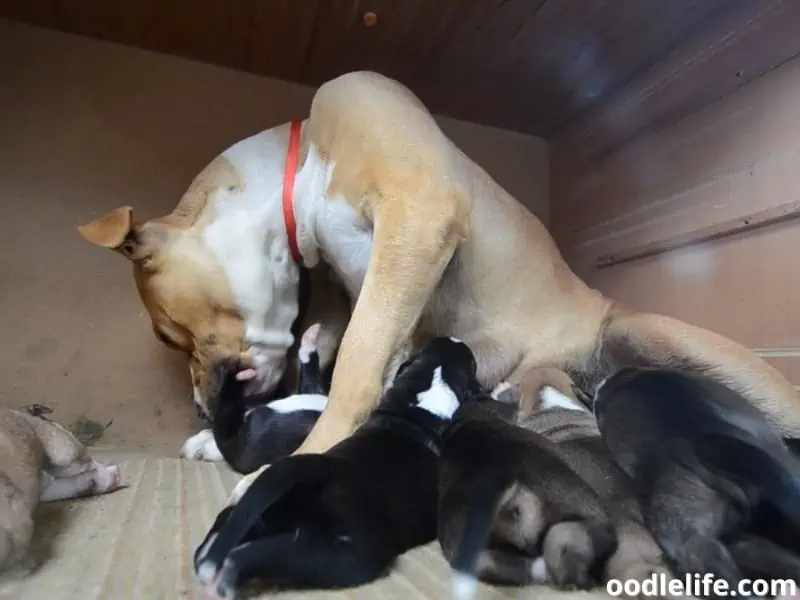
Examples of reasons for maternal cannibalism:
- Stress
- Inexperience
- Protecting remaining litter
Factors Contributing to Dog Cannibalism
Several factors can contribute to cannibalism in dogs. Hunger is a driving force behind this behavior, especially in stray or feral dogs who are struggling to find food. Another factor is abuse, where dogs that have been mistreated may show aggressive tendencies and attack other dogs. In some cases, dogs may resort to cannibalism when witnessing the corpse of an already-deceased dog, driven by desperation and the need for sustenance.

Factors contributing to dog cannibalism:
- Hunger
- Abuse
- Desperation
Behavioral Breeds and Dog Cannibalism
While dog cannibalism is not breed-specific, some breeds may be more prone to exhibiting aggressive behaviors due to their genetics and upbringing. It is important to remember that dog behavior can be influenced by various factors, including environment, upbringing, and training. Proper socialization and responsible ownership can help prevent unwanted aggression and cannibalistic tendencies in dogs.
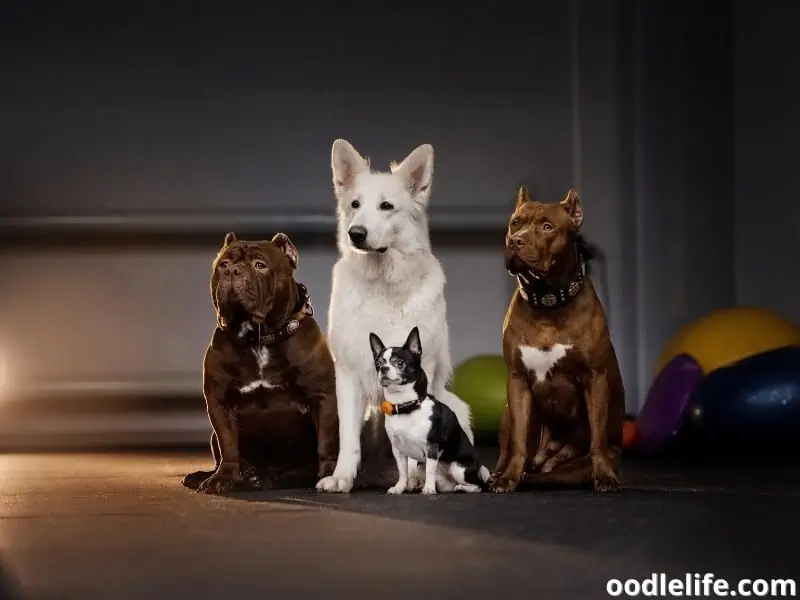
“Every dog has its day, but not every dog has a taste for its fellow canine.”
By being mindful of your dog’s breed and ensuring proper care and training, you can help reduce the risk of cannibalistic behavior. Remember, a well-fed and well-cared-for dog is less likely to resort to such desperate measures.
Helpful tips to prevent dog cannibalism:
- Proper socialization
- Responsible ownership
- Adequate nutrition
Examples of Cannibalism in the Animal Kingdom
Insects and Arachnids
Praying mantises are notorious for engaging in sexual cannibalism, where females consume their male partners after mating. But they are not the only ones in this category – ladybugs, redback spiders, and scorpions are also known to partake in cannibalism under certain conditions.
Talking about spiders, the crab spider is another example of a sneaky little cannibal. During mating, if the female gets hungry, she might just snack on her partner. Dating is hard in the spider world, right?
Mammals
Mammals aren’t exempt from cannibalistic behavior either. North American red squirrels, for instance, have been observed feeding on their own species’ carcasses. A more surprising example comes from the Arctic, where sloth bears have been reported to eat the remains of their own kind.
Pets kept in our homes aren’t all innocent in this matter: cats and hamsters, under specific circumstances or stress, might cannibalize their own offspring. African pygmy hedgehogs, when overcrowded or under stress, may turn on their companions.
Fun fact about pigs – they’re known to attack and eat not just their own kind but, occasionally, even humans. Who knew pigs had a dark side, too?
Reptiles and Amphibians
Reptiles, such as the sand tiger shark, engage in a ruthless kind of sibling rivalry. They will eat their brothers and sisters in the womb, essentially reducing the competition for resources once they are born.
Amphibians aren’t far behind. Tiger salamanders, when faced with a high population of larvae in a pond, transform into “cannibal morphs.” These morphs have enlarged jaws and sharp teeth, designed for one thing – to munch on their fellow tadpoles.
Cane toads and caecilians also showcase cannibalistic behavior at times. A specific species of caecilian, for example, feeds on the skin of its mother during its larval stage (thankfully, the mom can regrow her skin, so no harm done!).
Cannibalism in Domesticated Pets
Dogs Eating Their Offspring
Cannibalism can occur in domesticated pets, including dogs. This may come as a surprise to most pet owners, given the loving nature of our furry friends. In some cases, dogs may eat their young due to factors such as mastitis, an infection in the mother dog’s mammary glands. Mastitis can make nursing painful, leading the mother to perceive her offspring as a threat.
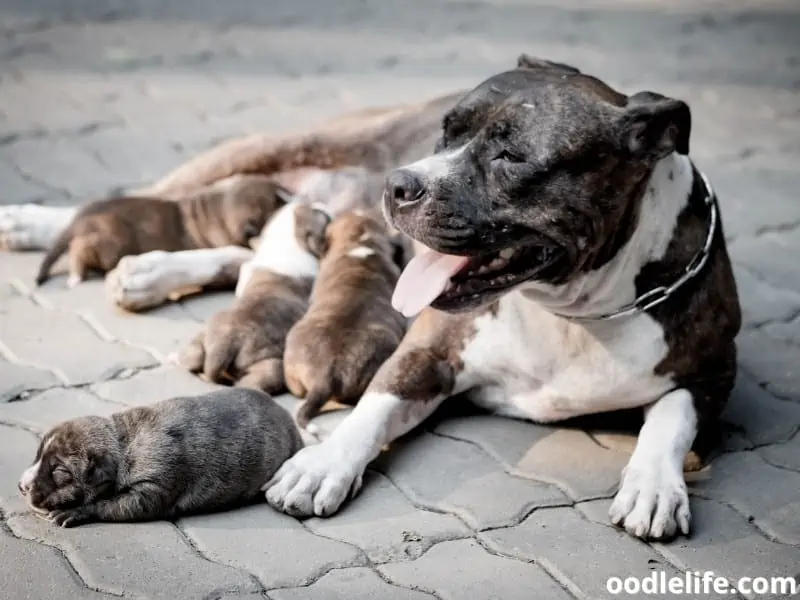
Stress can also be a factor for dogs eating their young. A dog in an unstable environment might feel anxious and overwhelmed, causing her to eat her offspring in an attempt to reduce her stress levels or to protect the pups from perceived danger.
It’s important to note that while these instances are rare, they do happen. Positive reinforcement, providing a calm environment, and ruling out any health issues in your dog can help prevent such incidents.
Cats Eating Their Kittens
Cats, like dogs, could engage in cannibalistic behavior. Sometimes, a mother cat will eat her kittens to protect them from dominant males who might perceive the kittens as a threat. Just like with dogs, influencing factors may include illness, weakness, or environmental stressors.
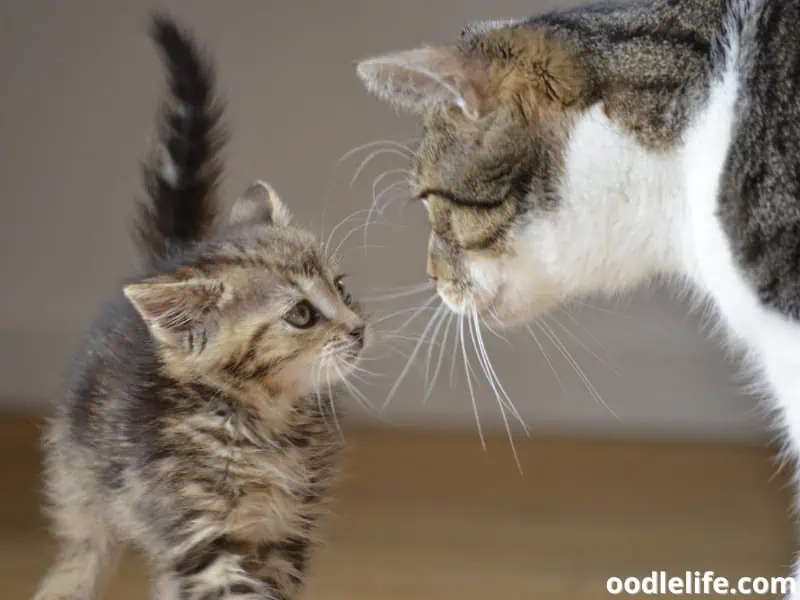
A mother cat might take a rather “extreme” measure to remove the umbilical cord by consuming it, along with the placenta. While this may seem alarming to us humans, it is actually quite normal in nature.
Instances of Accidental Cannibalism
Accidental cannibalism might occur when pets are introduced to a raw food diet. If any part of a fellow pet (such as fur or feathers) ends up in the raw food, it can lead to unintentional cannibalism. While this is relatively uncommon, it’s essential to keep an eye on the food preparation process.

Social media has brought instances of pets inadvertently munching on their own kind to light, sparking animal rights discussions and concerns. While most pet owners work hard to ensure their pets’ safety and well-being, accidents sometimes happen – providing cautionary tales for the rest of us.
In conclusion, cannibalism in domesticated pets is rare but does happen under specific circumstances. By understanding the factors that contribute to these incidents, pet owners can take steps to prevent them and keep their furry companions safe and happy.
Scientific Research and Public Perception of Cannibalism

Advancements in Animal Behavior Research
Over the years, scientific research has expanded our understanding of cannibalism in the animal kingdom. For instance, studies have shown interesting behaviors in species such as the praying mantis, where the females sometimes consume their male partners after mating. This has provoked debates surrounding animal rights, especially when it comes to the treatment of our companion animals like dogs.
Recent studies suggest that hunger can lead to increased neurohormones, encouraging aggression and potentially cannibalistic behavior in animals. While humans may view this as a gruesome act, it is essential to acknowledge that such behaviors can be a vital part of nature, even among seemingly gentle creatures like dogs.
Debates Surrounding Animal Rights
The discoveries about the prevalence of cannibalism among animals have sparked complex discussions about animal rights. With many people holding strong beliefs about the sanctity of all life forms, it is necessary to consider the implications of these research findings on our relationship with our animal companions.
For instance, should we question the appropriateness of owning dogs or other animals if they are capable of such violent behaviors? This train of thought has led to a broader conversation about how we care for these creatures, and how we can promote their well-being in harmony with our own needs and values.
Social Media’s Role in Perception
Social media has played a significant role in shaping the public perception of cannibalism among animals. With platforms providing a space for instant sharing of information, opinions, and debates, the topic has become more widely discussed than ever before.
Through the use of memes, infographics, and videos, the intricate world of animal behavior can be conveyed to a broader audience in an engaging and easily digestible way. This has led to a shift in how we view our animal companions, as people become more aware of the complexities of their behaviors and the consequences of our actions on their well-being.
Moreover, social media has enabled researchers and animal rights activists alike to raise awareness around controversial issues like animal cannibalism, fuelling discussions and, at times, inspiring positive change in our approach to treating animals with respect and understanding.